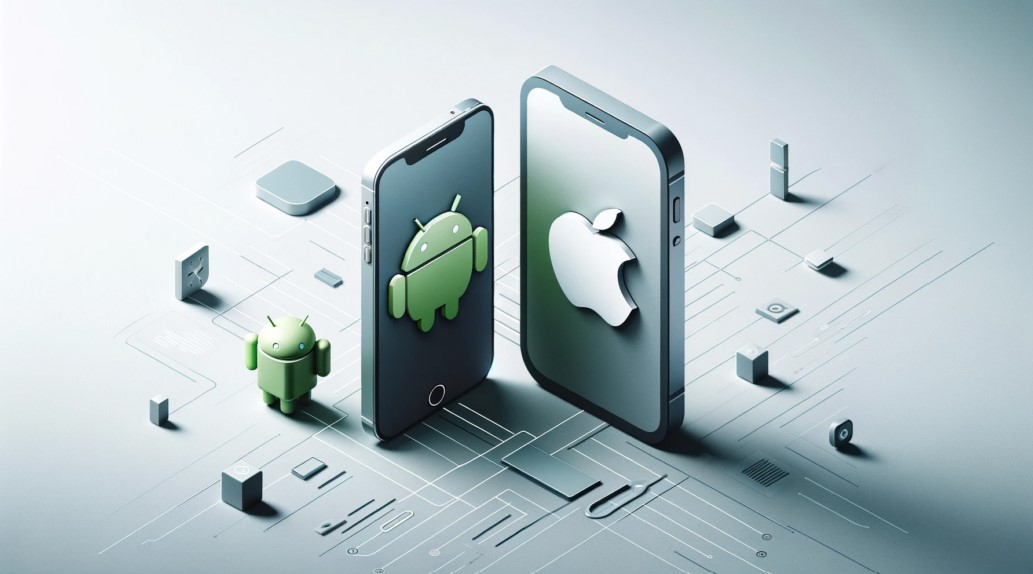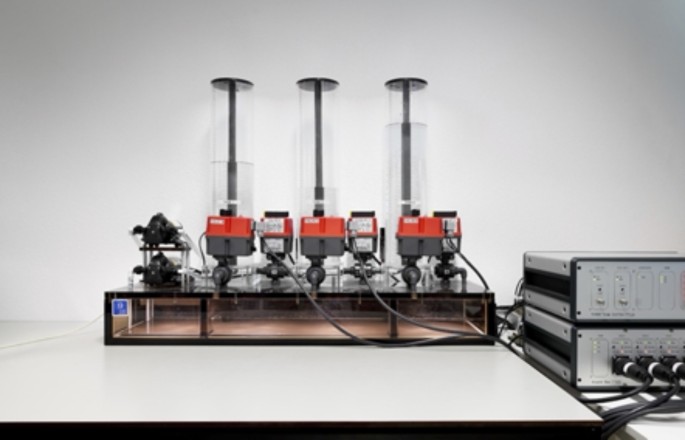
Ensuring consistency and reliability across diverse environments is crucial in the application development cycle. The advancement in device types, browser versions, and operating systems, all demand a testing approach that will work efficiently across all platforms and environments. This is where cross-device testing comes as an all-encompassing solution, that fits the competitive edge and fulfills user satisfaction.
Traditional approaches regarding cross-device testing revolved around maintaining a costly and complex array of physical devices and setting up complicated testing setups. However, with the advent of cloud-based testing methods, the process has transformed dramatically. By taking advantage of the power offered by cloud technologies, application development teams can efficiently automate cross-device testing with unmatched efficiency, flexibility, and scalability.
In this article, we will cover how cloud-based automation advances cross-device testing, the role of automation in cross-device testing, the benefits it offers, and best practices for harnessing its full potential to ensure a flawless user experience. But before starting that let’s have an overview of cross-device testing.
What is cross-device testing?
Cross-device testing can be defined as the process of analyzing the usability, functionality, and visual consistency of an application or website across different devices, including tablets, desktops, mobile, etc. This ensures a smooth and consistent behavior of the application.
It aims to ensure that users have a similar experience, regardless of the device they use. Factors like different screen resolutions, operating systems, input methods, browser types, and other aspects are taken into consideration.
A vast array of virtual environments and real devices can be accessed with cloud-based testing platforms. This allows testers and developers to run tests over different configurations without requiring a comprehensive setup. The switch to cloud automation not only advances the testing process but also elevates the testing coverage over different platforms and devices.
Importance of cross-device testing
Cross-device testing becomes crucial in ensuring maximized compatibility and responsiveness of digital applications and websites on diverse platforms. With the increased access to websites and applications by users on different devices, it’s a must to give a seamless experience, despite the device being used.
By conducting comprehensive cross-device testing, testers, and developers can recognize and fix any issues that are likely to arise on certain browsers, devices, or screen sizes, therefore optimizing the overall user support and satisfaction.
Benefits of cross-device testing
Amplified user experience
One of the characteristic attributes of cross-device testing is the potential to bring forth an amplified user experience to the users. By implementing cross-device testing methods, testers and developers can ensure that the application has optimal functionality across all devices.
Fixing and identifying bugs
The application which works seamlessly across different devices having different screen resolutions and operating systems, poses a greater chance of having bugs that are unique to the platforms. However, with the advent of cross-device testing, these bugs and issues can be fixed in the early stages of the development cycle. This feature in turn aids in enhancing the overall performance and stability of the application.
Optimizing performance
As we know the performance of the application is proportional to the device’s hardware. So when cross-device testing is performed on devices having high and low hardware specifications, the application can also be optimized for running flawlessly on devices with low specifications. Hence an application for low-end devices is also granted to the users.
Better conversion rates
Cross-device testing aids the testers in recognizing and resolving any complications that could interfere with the user’s journey toward conversion. By ensuring optimal user experience across different devices, testers can elevate the conversion rates and as a result, the overall success of the application is achieved.
Cost efficient
Initially, cross-device may involve investments, but it turns out to be a cost-efficient approach in the long run. The fixing and detection of bugs in the early development cycle become beneficial in saving resources. It also efficiently minimizes potential post-launch problems.
Compliance and security
Another benefit that comes with cross-device testing is its ability to fulfill the regulatory and security compliance of the application effectively. Ensuring regulatory and security compliance across different operating systems and platforms is very important for an application. Because of cross-device testing, testers can verify that the security measures are functioning properly across all supported devices, which in turn will help in maintaining trust and safeguarding user data.
Stay competitive
Cross-device testing has gained an imperative advantage in today’s extremely competing technological era. It ensures that the application is working without complications across different devices. In this way, testers can take precedence over the other competitors. Thus securing a competitive advantage.
Automating cross-device testing on cloud
Automation plays a crucial role in overcoming the challenges that come with cross-device testing. By automating the test execution process, testers can accomplish significant accuracy, greater efficiency, and enhanced test coverage. So in general, automation helps in many ways including:
Speed and efficiency: When it comes to test execution, automated tests can be executed faster as compared to manual tests. All kinds of test cases can be performed at the same time on different devices. This minimizes the overall time needed for testing.
Reusability: Automating tests ensures that the test scripts can be reused across different devices and platforms, therefore minimizing the effort needed for building new test cases for each configuration.
Consistency: Automated tests are known for ensuring consistency across platforms. They prevent human error, which helps in ensuring that tests are executed accurately and consistently whenever they are performed.
Scalability: Automation enables testers to boost up the test execution process. With this approach, a wide range of devices and configurations are covered without limiting the testing resources.
Tools for automated cross-device testing
LambdaTest
Being a cloud-based automation testing platform, LambdaTest comes with a great deal of benefits that never fail the testers and developers. It is a highly potent cross-device testing platform that allows developers to maximize the functionality of web applications over a broad spectrum of browsers and devices.
With its AI-powered test execution and orchestration platform, LambdaTest enables testers to run real manual and automated tests at scale. The platform also enables testers and developers to conduct both real-time and automation testing on both desktop and mobile by providing access to more than 3000 environments, real mobile devices, and browsers. All of this can be achieved without the need for maintaining a physical device lab. This robust cloud-based testing solution provides automated screenshot capabilities and real-time interactive testing, that in turn provides enhanced visual verification and comprehensive debugging capabilities.
When it comes to web device testing, LambdaTest provides a robust testing environment where testers can run parallel tests, which minimizes cross-browser testing time. The platform supports a wide range of testing tools and frameworks that show seamless integration with popular CI/CD tools. Thus, continuous integration and smooth workflow are ensured.
Perfecto
A versatile cloud-based platform that provides access to real devices for application testing on a wide range of devices and browsers. Testers avail the benefit of Selenium for carrying out cross-device testing on Perfecto.
Eggplant
Being a commercial GUI automated testing tool, EggPlant can be used for testing applications on Android, and iOS platforms, and web applications. It can efficiently carry on functional testing, UI automation, mobile testing, image-based testing, and network testing.
Kobiton
Kobiton is a mobile device cloud that offers remote access to a large number of real mobile devices. This enables testers to conduct mobile application testing on various configurations, different hardware, and operating systems.
Tips for Cross-device testing on the cloud
Device and platform coverage: When it comes to key considerations for cross-device testing, testers should analyze the latest devices, browsers, and operating systems that are being used by the target audience. Also for ensuring a consistent performance and compatibility of the application, testers can check the functionality across different platforms and devices.
Responsive design: For an optimal user response, it becomes important for testers and developers to make sure that the application follows the responsive design principles. This process allows the content and layout to adjust to different screen sizes efficiently.
Functional testing: To ensure the proper functionality of the application on different devices, ensure that all interactive elements like forms, buttons, and menus, are working as per the requirement. Also, be watchful of mouse interactions on desktops and touch interactions on mobile devices.
Performance testing: Check the application’s performance over distinct devices, keeping in mind factors like response times, load times, and resource consumption. For a seamless operation across diverse network conditions and devices, performance optimizations become a must.
Visual consistency: Evaluate the visual appearance of the website or application over devices having different features and operations. Elements like fonts, layouts, images, and colors, should have consistency over different resolutions and screen sizes.
User experience testing: Perform user testing with representatives from the target audience employing different devices. Collect valuable feedback in terms of navigation, usability, navigation, and overall satisfaction, so that device-specific issues are detected for improvement.
Best practices for cross-device testing: automation on the cloud
Define clear testing objectives
Before starting with cross-device testing, it becomes crucial to define the testing objectives beforehand. Outline the important browsers, key devices, and operating systems for the application. This approach helps in focusing the testing efforts on configurations that are most important to the users.
Utilize the Page Object Model (POM)
Think about employing the Page Object Model (POM) while writing automated tests, for a manageable and organized test code. POM enables testers to separate the page-specific code from the test logic, which in turn enhances the scalability and maintainability of the tests.
Implement robust wait strategies
Robust wait strategies can be implemented to handle dynamic web elements and asynchronous content in the test scripts. Explicit waits can also be implemented to wait for specific conditions to be met before interacting with elements. It therefore is beneficial in upgrading the test reliability.
Leverage test data management
To ensure the reliability and repeatability of the tests, testers can opt for data-driven testing approaches and manage test data with maximized efficiency. Testers can also cover a wide range of test cases by performing similar test scenarios with different data sets. This helps in covering a broader range of test cases.
Analyze results and monitor test execution
By monitoring the automated test execution regularly and analyzing the results, testers can elevate the testing process manifold. Detailed logs, videos, and screenshots are offered by cloud-based platforms that aid in identifying issues. Thus, the overall test coverage can be advanced by using these insights.
Integrate with CI/CD pipelines
Integrating the automated tests with CI/CD pipelines provides a continuous testing experience composed of development workflow. This integration is useful in recognizing and solving issues early, and thus, an optimized quality application is achieved.
Prioritize device and browser coverage
When it comes to best practices for cross-device testing, it becomes important to bring light to testing the most vital browsers and devices being used by the specified audience. Even though it is crucial to cover a broad range of configurations, testers should classify the ones having the greatest influence on the user base.
Use features offered by the cloud testing platform
Make the most of the advantages provided by cloud testing platforms, like network simulation, device farms, and performance monitoring. These features help in building an all-encompassing environment for testing and also ensure that the application shows optimal performance in different scenarios.
Conclusion
Cross-device testing plays a pivotal role in ensuring that the applications offer an ideal and consistent testing experience to users across diverse platforms and devices.
Automation, especially when it is carried out in a cloud-based environment, provides maximized benefits in terms of scalability, efficiency, and cost-effectiveness. By using most cloud-based testing platforms, teams and developers can access a broad range of devices, integrate testing into their CI/CD pipelines, and simultaneously run tests.








